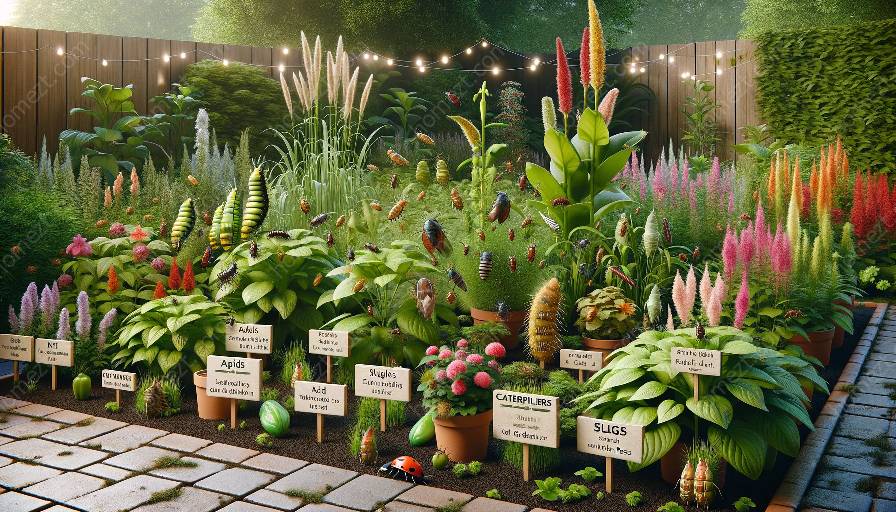Gardening is a rewarding hobby that requires diligence and care to ensure the health and vitality of your plants. However, numerous pests and diseases can threaten the well-being of your garden. Understanding the common garden pests and how to identify them is essential for effective pest control and disease management. In this comprehensive guide, we will explore the most prevalent garden pests and their identification, as well as strategies for managing their impact on your garden.
Identifying Common Garden Pests
Recognizing the signs of pest infestations is crucial for early intervention and control. Here are some of the most common garden pests and how to identify them:
Aphids
Aphids are small, soft-bodied insects that can be found clustered on the undersides of leaves and stems. They feed on plant sap, causing stunted growth and distorted leaves.
Whiteflies
Whiteflies are tiny, moth-like insects that feed on the undersides of leaves. They leave behind a sticky residue called honeydew, which can lead to the growth of sooty mold.
Snails and Slugs
These slimy pests are known for their voracious appetites, leaving behind large, irregular holes in leaves and fruits. They are active at night and thrive in moist environments.
Caterpillars
Caterpillars are the larval stage of moths and butterflies. They can cause significant damage by feeding on leaves, flowers, and fruits.
Spider Mites
These minuscule pests are difficult to spot with the naked eye, but their fine webbing and yellow stippling on leaves are telltale signs of an infestation.
Monitoring and Control
Once you have identified the pests in your garden, it is essential to implement effective control measures to prevent further damage. Here are some methods for managing common garden pests:
Natural Predators
Encourage the presence of beneficial insects such as ladybugs, lacewings, and predatory mites, which feed on garden pests. Planting diverse flowers and herbs can attract these natural predators to your garden.
Manual Removal
Handpicking pests such as caterpillars, snails, and slugs can be an effective method for reducing their numbers. Regularly inspect your plants and remove any visible pests.
Biological Control
Introduce biological control agents such as nematodes, bacteria, or fungi that target specific pests while minimizing harm to beneficial organisms and the environment.
Organic Sprays
Utilize organic insecticidal soaps, neem oil, or horticultural oils to control soft-bodied insects like aphids and whiteflies while minimizing the impact on beneficial insects.
Preventing Plant Diseases
Aside from pests, plant diseases can also pose significant threats to your garden. Implementing preventive measures is crucial for maintaining a healthy garden ecosystem:
Proper Planting Practices
Choose disease-resistant plant varieties and ensure proper spacing to promote good air circulation and reduce the risk of fungal diseases.
Maintain Soil Health
Regularly amend your soil with organic matter and ensure proper drainage to prevent root rot and other soil-borne diseases.
Sanitation
Remove and destroy infected plant material to prevent the spread of diseases. Clean gardening tools and equipment to minimize the risk of contamination.
Integrated Pest Management (IPM)
Adopt an IPM approach by combining various pest control methods and cultural practices to minimize the use of chemical interventions and maintain a balanced garden ecosystem.
Conclusion
By understanding the common garden pests, effectively identifying them, and implementing appropriate control measures, you can safeguard your garden from potential damage. Additionally, integrating preventive strategies for plant diseases will help maintain the overall health and vitality of your garden. Continue to observe and monitor your garden regularly to address any potential pest or disease challenges, and enjoy the abundance of a thriving and resilient garden ecosystem.



















